Conference Speakers
Session 1 speakers
Bevan Buirchell
Biochemist and Eremophila Taxonomist, Wise Owl Consulting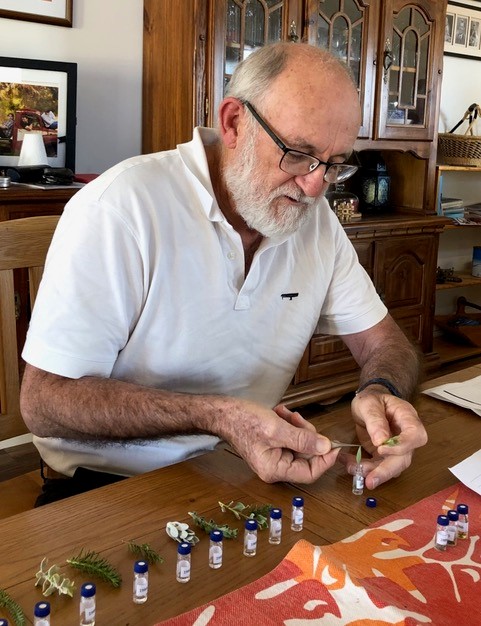 Dr Bevan Buirchell graduated from UWA in 1982 with a PhD in Biochemistry. He has over 30 years experience in biological sciences research and project management. He worked with the Dept of Agriculture and Food for 25 years and was the Senior Plant Breeder and Project Manager of the National Lupin Breeding program in Australia. Bevan has been a Research Associate at the West Australian Herbarium for a number of years, focusing on taxonomic studies of the genus Eremophila and is responsible for identifying or confirming all the Eremophila identifications. In collaboration with Andrew Brown he has described 17 new species of Eremophila and is also the co-author of the reference book, “A Guide to the Eremophilas of Western Australia”. His knowledge of the plant genera growing in the deserts of Western Australia is extensive. Bevan is a keen outback traveller and has travelled extensively throughout Western Australia.
Dr Bevan Buirchell graduated from UWA in 1982 with a PhD in Biochemistry. He has over 30 years experience in biological sciences research and project management. He worked with the Dept of Agriculture and Food for 25 years and was the Senior Plant Breeder and Project Manager of the National Lupin Breeding program in Australia. Bevan has been a Research Associate at the West Australian Herbarium for a number of years, focusing on taxonomic studies of the genus Eremophila and is responsible for identifying or confirming all the Eremophila identifications. In collaboration with Andrew Brown he has described 17 new species of Eremophila and is also the co-author of the reference book, “A Guide to the Eremophilas of Western Australia”. His knowledge of the plant genera growing in the deserts of Western Australia is extensive. Bevan is a keen outback traveller and has travelled extensively throughout Western Australia.
Title of talk: Eremophila diversity in Western Australia
Abstract: The genus Eremophila is confined to Australia and consists of 294 species and subspecies. Of these species approximately 20 - 30 species have been used by Aboriginals for ceremonial or medicinal purposes. Eremophila is a highly diverse genus and includes species that are prostrate to small trees. Western Australia is the centre of diversity with about 85% of the species of which 80% are endemic to the west. Since Chinnock revised the Myoporacae in 2007 there have been 22 new species named and there are still upward of 60 new taxa to be described. Most of these new taxa have restricted ranges and are vulnerable to local land use changes. The challenge of the project on medicinal compounds in Eremophila was to sample as much diversity as possible.
Link to Bevan Buirchell's personal profile
Bob Chinnock
Honorary Research Associate at the State Herbarium of South Australia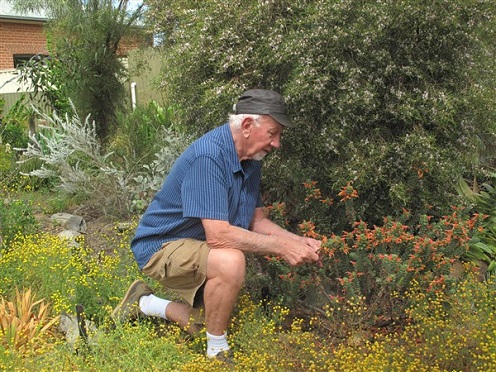
Bob grew up in Wellington, New Zealand gaining his M.Sc. (Hons) at Victoria University of Wellington in 1971. He moved to Adelaide in 1972 to join the staff of the State Herbarium of South Australia as a taxonomist. His study of Eremophila began in 1975 and he gained a PhD from the Flinders University of South Australia in 1982. He expanded the study to cover the family Myoporaceae, recognized at that time. Field work across Australia and at a number of overseas locations was undertaken and the great majority of species were studied in situ. Apart from the taxonomic aspects of the group, his interests also covered seedling development, rare and endangered species, fire ecology, breeding systems seed dispersal mechanisms and the introduction of species into cultivation, especially rare and endangered ones. Bob retired in 2007 but continues as an Honorary Research Associate at the herbarium and continues to undertake research on Eremophila, feral Cactaceae and Gunniopsis (Aizoaceae).
Title of talk: Eremophila and allied genera – constructing the monograph
Abstract: The monograph covered the study of 7 genera, 250 species and 105 subspecies and took 32 years to complete. Some of the problems that arose during the preparation of the monograph are examined and the diversity of vegetative, floral and fruit features found in Eremophila and its relatives are discussed.
Link to Bob Chinnock's personal profile
Mike Bayly
Senior Lecturer in Botany, Plant Systematics Research Group, University of Melbourne
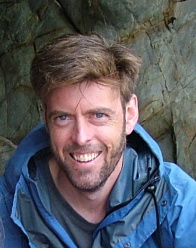 I studied botany at The University of Melbourne, including a PhD on the phylogeny and biogeography of the Australian plant genus Philotheca (Rutaceae). From 1996-2005 I worked at the Museum of New Zealand, where I was part of a team revising the classification of Hebe (Veronica), New Zealand’s largest plant genus.
I studied botany at The University of Melbourne, including a PhD on the phylogeny and biogeography of the Australian plant genus Philotheca (Rutaceae). From 1996-2005 I worked at the Museum of New Zealand, where I was part of a team revising the classification of Hebe (Veronica), New Zealand’s largest plant genus.
That work, as well as producing many scientific papers, culminated in the publication of An illustrated guide to New Zealand hebes, a comprehensive monograph of those plants. In 2005 I moved back to The University of Melbourne,working initially as a Research Fellow on a project on eucalypt phylogeny. In 2010, I was appointed as a Lecturer in Plant Systematic and Evolutionary Biology. My research has included species-level taxonomy, morphometrics, nomenclature, biogeography, phylogeography, and molecular phylogenetics. I am broadly interested in understanding the diversity and history of the Australasian flora. My work has focussed mostly on plants in the Rutaceae, Scrophulariaceae (in the broad sense) and Myrtaceae, but I am involved in projects on ferns, and a range of other plant groups.
Title of talk: Why Eremophila is a fascinating subject for phylogenetic analysis
Abstract: I will provide background to our ongoing studies of the evolutionary history of Eremophila and relatives. This research will lead to a revised classification of the group, improve understanding of the history of Australia's arid zone flora, and underpin studies of plant chemistry and plant/insect interactions. I will introduce the molecular tools we are using for this work and will provide background to the following talk by Rachael Fowler.
Link to Mike Bayly's personal profile
Rachael Fowler
Postdoctoral Fellow, Plant Systematics Research Group, University of Melbourne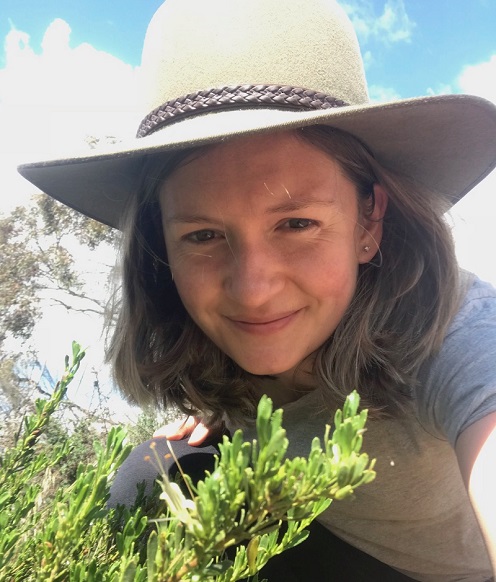 Dr Rachael Fowler is studying phylogeny, classification and biogeography of the genus Eremophila (Myoproaceae). These plants are concentrated in arid and semiarid Australia. Understanding their relationships will support improved classification and provide insight into evolution of the arid zone flora. In conjunction with Prof. Gerry Cassis (University of NSW) Rachael is also investigating coevolutionary patterns between Eremophila and a diverse group of sap-sucking insects (genus Lasiacantha) that use them as hosts. Rachael’s project is supported by Jim H. Ross scholarship with funding from the Cybec Foundation.
Dr Rachael Fowler is studying phylogeny, classification and biogeography of the genus Eremophila (Myoproaceae). These plants are concentrated in arid and semiarid Australia. Understanding their relationships will support improved classification and provide insight into evolution of the arid zone flora. In conjunction with Prof. Gerry Cassis (University of NSW) Rachael is also investigating coevolutionary patterns between Eremophila and a diverse group of sap-sucking insects (genus Lasiacantha) that use them as hosts. Rachael’s project is supported by Jim H. Ross scholarship with funding from the Cybec Foundation.
Title of talk: Molecular phylogeny of Eremophila and tribe Myoporeae
Abstract: Recent phylogenetic work on Eremophila and the tribe Myoporeae (including Myoporum, Diocirea, Bontia, Calamphoreus, Glycocystis and Pentacoelium), has revealed a number of taxonomic issues at generic, sectional and species levels of classification. I will discuss our current phylogenetic understanding of evolutionary relationships in tribe Myoporeae, our most recent findings related to the Eremophila glabraspecies complex, and the taxonomic and practical implications of our current work on all areas of research in Eremophila.
Link to Rachael Fowler's personal profile
Oliver Gericke
PhD student, Plant Biochemistry, University of Copenhagen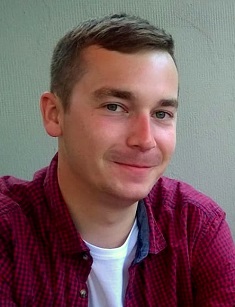 I am currently undertaking my PhD studies in Plant Biochemisty at University of Copenhagen. My PhD is focused on the exploration of chemical diversity in the Eremophila genus using both molecular biology and computational approaches. Within my molecular work, I have specifically focused on discovering pathways of enzymes involved in diterpenoid synthesis and modification. The work has included transcriptomics and functional characterization methods to identify enzyme candidates. This will lay the groundwork for metabolic engineering of the enzymes in S. cerevisiae and E. coli to produce pure Eremophila diterpenoids for downstream applications. In addition, I have developed a computational pipeline to explore the chemical space of the whole Eremophila genus using metabolomics and molecular networking approaches. This work will help to shed light on the unknown chemistry present in Eremophila and facilitate the search for new bioactive compounds. My work is mainly supervised by Dr. Allison Heskes and Prof. Birger Møller. It is part of the highly collaborative project “Desert-loving therapeutics” funded by the Novo Nordisk Foundation. I am a member of the High Value Phytochemical group led by Assistant Prof. Irini Pateraki at University of Copenhagen.
I am currently undertaking my PhD studies in Plant Biochemisty at University of Copenhagen. My PhD is focused on the exploration of chemical diversity in the Eremophila genus using both molecular biology and computational approaches. Within my molecular work, I have specifically focused on discovering pathways of enzymes involved in diterpenoid synthesis and modification. The work has included transcriptomics and functional characterization methods to identify enzyme candidates. This will lay the groundwork for metabolic engineering of the enzymes in S. cerevisiae and E. coli to produce pure Eremophila diterpenoids for downstream applications. In addition, I have developed a computational pipeline to explore the chemical space of the whole Eremophila genus using metabolomics and molecular networking approaches. This work will help to shed light on the unknown chemistry present in Eremophila and facilitate the search for new bioactive compounds. My work is mainly supervised by Dr. Allison Heskes and Prof. Birger Møller. It is part of the highly collaborative project “Desert-loving therapeutics” funded by the Novo Nordisk Foundation. I am a member of the High Value Phytochemical group led by Assistant Prof. Irini Pateraki at University of Copenhagen.
Title of talk: Exploring the chemical diversity in Eremophila using computational tools
Abstract: (Oliver Gericke, Rachael Fowler, Bevan Buirchell, Irini Pateraki , Michael J. Bayly, Birger Lindberg Møller and Allison Maree Heskes) Plant species of the genus Eremophila R. Br. (Scrophulariaceae) can be found growing across arid Australia, many in remote locations. The genus has a long history of use in traditional medicine. Extracts show a variety of bioactivities, particularly antibacterial, much of which has been attributed to the presence of diterpenoids in the plant extracts. Eremophila is phytochemically rich and includes, along with a diverse array of unusual diterpenoids, many other classes of molecules ranging from furano-sesquiterpenes to iridoids to cyanogenic glycosides. Although, much progress has been made in characterizing the phytochemicals in selected species of this large genus, there are still hundreds of species that remain largely unexplored. To fully understand and be able to utilize the chemical potential provided by this genus, a thorough investigation of the chemical diversity is needed. To this end, leaf extracts from 411 Eremophila species and related genera were analysed by LC-HRMS to generate an un-targeted metabolite dataset. Computational tools were used to process and analyse this comprehensive metabolite dataset, including the use of metabolite cluster analysis and molecular networking tools. A current collaborative approach is attempting to merge this dataset with an exhaustive nrDNA based phylogeny covering the whole Eremophila genus. The results of this genus-wide analysis will be able to shed light on the unknown chemical space of Eremophila biochemistry and how this relates to the evolution of the genus. The knowledge gained from this analysis will also provide guidance for the selection of Eremophila species for further investigation as new sources of drugs.
Link to Oliver Gericke's personal profile
Session 2 speakers
Susan Semple
Senior Research Fellow, School of Pharmacy and Medical Sciences, University of South Australia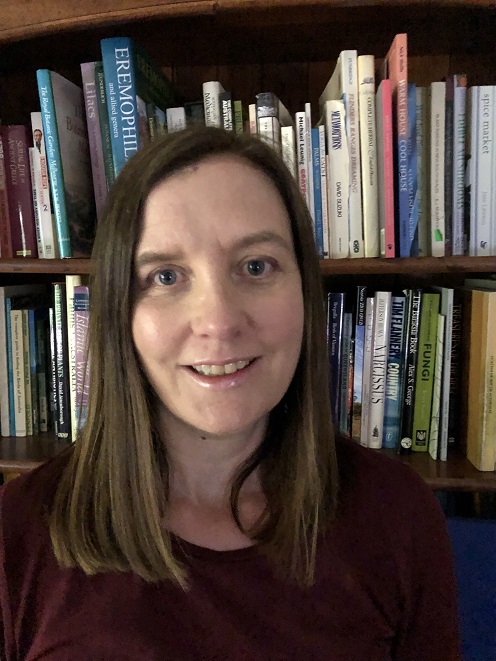 I have a background in pharmacy and natural products chemistry. My research interests include Australian medicinal and food plants with an emphasis on research which is in partnership with Australian Aboriginal communities and driven by the communities themselves. Currently my work involves collaborative research projects with communities in Queensland and South Australia examining the health benefits of, and product development from, some traditional medicinal and food plants. We focus on plants with antibacterial, anti-inflammatory and anti-diabetic activities. I also collaborate with researchers at the University of Copenhagen in Denmark and Shandong University in China. I am a member of the “Desert-loving Therapeutics” project team. Led by Professor Birger Møller of the Plant Biochemistry Laboratory, University of Copenhagen, this interdisciplinary project brings together botany, taxonomy, evolutionary phylogeny, plant chemistry and pharmacology to understand the chemistry and bioactivity of the Australian plant genus Eremophila. Thorough this project we are looking at models of equitable benefit-sharing and the establishment of a Trust to fund projects driven by Indigenous communities and organisations.
I have a background in pharmacy and natural products chemistry. My research interests include Australian medicinal and food plants with an emphasis on research which is in partnership with Australian Aboriginal communities and driven by the communities themselves. Currently my work involves collaborative research projects with communities in Queensland and South Australia examining the health benefits of, and product development from, some traditional medicinal and food plants. We focus on plants with antibacterial, anti-inflammatory and anti-diabetic activities. I also collaborate with researchers at the University of Copenhagen in Denmark and Shandong University in China. I am a member of the “Desert-loving Therapeutics” project team. Led by Professor Birger Møller of the Plant Biochemistry Laboratory, University of Copenhagen, this interdisciplinary project brings together botany, taxonomy, evolutionary phylogeny, plant chemistry and pharmacology to understand the chemistry and bioactivity of the Australian plant genus Eremophila. Thorough this project we are looking at models of equitable benefit-sharing and the establishment of a Trust to fund projects driven by Indigenous communities and organisations.
Link to Susan Semple's personal profile
David Claudie
CEO and Chairperson of Chuulangun Aboriginal Corporation
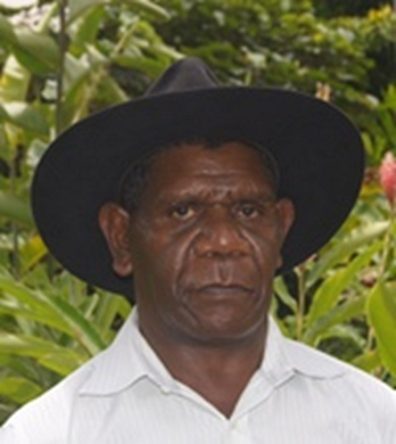 David Claudie is a Kuuku I’yu Northern Kaanju traditional owner and custodian of the northern Kaanju homelands, Northern Wenlock and Pascoe Rivers in Cape York, Queensland. He is the CEO and Chairperson of Chuulangun Aboriginal Corporation, where he supports and facilitates homelands development, sustainable natural resource management and economic development. David has extensive experience in natural resource management on Cape York. His leadership drove the declaration of the Kaanju Ngaachi Wenlock and Pascoe Rivers Indigenous Protected Area (IPA), the first IPA declared in Cape York.
David Claudie is a Kuuku I’yu Northern Kaanju traditional owner and custodian of the northern Kaanju homelands, Northern Wenlock and Pascoe Rivers in Cape York, Queensland. He is the CEO and Chairperson of Chuulangun Aboriginal Corporation, where he supports and facilitates homelands development, sustainable natural resource management and economic development. David has extensive experience in natural resource management on Cape York. His leadership drove the declaration of the Kaanju Ngaachi Wenlock and Pascoe Rivers Indigenous Protected Area (IPA), the first IPA declared in Cape York.
Title of talk: Indigenous knowledge and biodiscovery
Abstract: (David J. Claudie and Susan J. Semple). Indigenous medicinal plant knowledge has provided leads to discovering therapeutic products used in Western medicine and complementary medicine. There is significant potential to develop new medicinal products from plants used in the traditional medicine systems of the Indigenous peoples of Australia. However, Western scientific research into Australian medicinal plants has often given limited recognition, involvement or benefits for the traditional owners of knowledge about these plants. Through our work we have sought to develop a model for medicinal plant research that is locally initiated and driven by Aboriginal people as part of their own planning for sustainable management and economic development of their plants. Research has been undertaken on traditional homelands and in the University laboratories. The project was initiated by Chuulangun Aboriginal Corporation, which represents particular Aboriginal traditional owner families of the Kuuku I’yu homelands in Central Cape York, Queensland, Australia. This organisation is localised and is an extension of ancient traditional governance structures. A number of the plant species chosen for testing by the research group have demonstrated activities in laboratory-based testing which reflect the traditional understandings of the actions and significance of these plants. These serve as examples that marry both Western science and Australian Indigenous knowledge, science and culture.
Link to personal profile
Link to website for Chuulangun Aboriginal Corporation
Daniel Robinson
Associate Professor, Environment Group, Arts and Social Sciences, UNSW, Sydney, Australia. Academic Co-Lead for the Pacific, for the UNSW Institute for Global Development, Pacific Regional Manager of the Access and Benefit-Sharing Capacity Development Initiative Dr Daniel Robinson has a background in human geography, environmental science and environmental law. Daniel's research focuses on the regulation of nature and knowledge. His papers and books cover themes including 'biopiracy', access and benefit-sharing relating to biological resources, appropriation and regulation of Indigenous knowledge, Indigenous/customary laws and biocultural protocols, ethical biotrade, political ecology, environmental policy and management. Daniel also has an interest in the environmental and social implications of multilateral, regional and bilateral trade rules and negotiations, and has several papers/chapters on the negotiation politics of these forums. On these issues, Daniel has acted as a researcher and policy advisor on a number of project both in Australia and globally. He is Chief Investigator with Dr Margaret Raven on the 5 year Australian Research Council (ARC) Discovery Project: Indigenous knowledge futures: protecting and promoting indigenous knowledge (2018-2022).
Dr Daniel Robinson has a background in human geography, environmental science and environmental law. Daniel's research focuses on the regulation of nature and knowledge. His papers and books cover themes including 'biopiracy', access and benefit-sharing relating to biological resources, appropriation and regulation of Indigenous knowledge, Indigenous/customary laws and biocultural protocols, ethical biotrade, political ecology, environmental policy and management. Daniel also has an interest in the environmental and social implications of multilateral, regional and bilateral trade rules and negotiations, and has several papers/chapters on the negotiation politics of these forums. On these issues, Daniel has acted as a researcher and policy advisor on a number of project both in Australia and globally. He is Chief Investigator with Dr Margaret Raven on the 5 year Australian Research Council (ARC) Discovery Project: Indigenous knowledge futures: protecting and promoting indigenous knowledge (2018-2022).
Title of talk: Access, benefit-sharing, customary law and culturally significant species
Abstract: This paper discusses the access and benefit-sharing (ABS) regime relating to genetic resources and Indigenous knowledge in Australia, its gaps and progress. It presents patent results for Eremophila species, and highlights the limitations of the IP regime for protecting or promoting Indigenous knowledge. Eremophila species are considered sacred by some Aboriginal peoples in Australia, so we discuss the need to seek consent and to involve Traditional Owners in decision-making about research and commercial use of the plants and about any data that may be developed from the R&D. Last, the paper discusses customary law as embedded in Dreamings, which are often used to regulate rights and responsibilities to plants for Aboriginal Australian peoples.
Link to Daniel Robinson's personal profile
Margaret Raven
Scientia Fellow, University of New South Wales, Sydney, Australia
Introduction
Title of talk
Abstract
Link to Margaret Raven's personal profile
Peta Cobourn
Social Enterprise Manager, Purple House, Alice Springs, AUS
About Purple House and Bush Balm
Indigenous Australians have used native plants to treat common ailments and illnesses for thousands of years. Their traditional knowledge inspires the Bush Balm products, which are made from wild harvested medicinal plants expertly collected on Aboriginal Lands in Central Australia. Irmangka irmangka, Yawirriyawirri and Arrethe have been used for generations to treat aches, muscle pain, joint inflammation, skin conditions and to ease cold & flu symptoms.
The Bush Balm social enterprise is run by Purple House, an innovative Indigenous-owned and operated health service based in Alice Springs in the Northern Territory that runs 14 remote dialysis clinics and a mobile unit called the Purple Truck. The products provide employment opportunities for patients and their families. Our organisation supports fair trade practices and respects Indigenous intellectual and cultural knowledge.
Title of talk: The Purple House. A NGO Aboriginal owned and directed Primary Health Service: Social Enterprise - Traditional Medicinal Plants from Central Australia
Link to more information
Joanie Jamie
Associate Prof Joanne Jamie, Bioorganic and Medicinal Chemist, Department of Molecular Sciences. Macquarie University, Sydney, Australia. Indigenous Bioresources Research Group Co-Director and National Indigenous Science Education Program Co-Director

Associate professor Joanne Jamie is a Bioorganic and Medicinal Chemist at the Department of Molecular Sciences at Macquarie University in Sydney. Her research activities include the firsthand documentation, biological screening and isolation of bioactive compounds from customary (traditional and contemporary) medicines; the design of radiopharmaceuticals for diagnosis and treatment of cancer and other diseases; and studies on isolation and synthesis of fruit fly attractants and analysis of their effectiveness to help address the major agricultural problem of fruit fly infestation in crops. As part of her work on customary medicinal plants with Yaegl and Bundjalung Elders of northern New South Wales, Australia, Joanne and her team have published six journal articles co-authored with the Elders and developed a bush medicine handbook for use in education and cultural tourism, as well as facilitated a Cultural Immersion Program – The River of Learning. As a best ethical practice extension to this research, she has also established with the Elders, the National Indigenous Science Education Program (NISEP, nisep.org.au), which uses Western and Indigenous science to enhance educational outcomes for Indigenous youth. Joanne additionally developed and convenes the Macquarie University subject Engaging the Community in Science, which allows Macquarie undergraduate students to contribute to and increase the capacity of NISEP. Her work with the Yaegl and Bundjalung Elders has been recognised for its respectful practices and community capability strengthening and has received various awards and accolades.
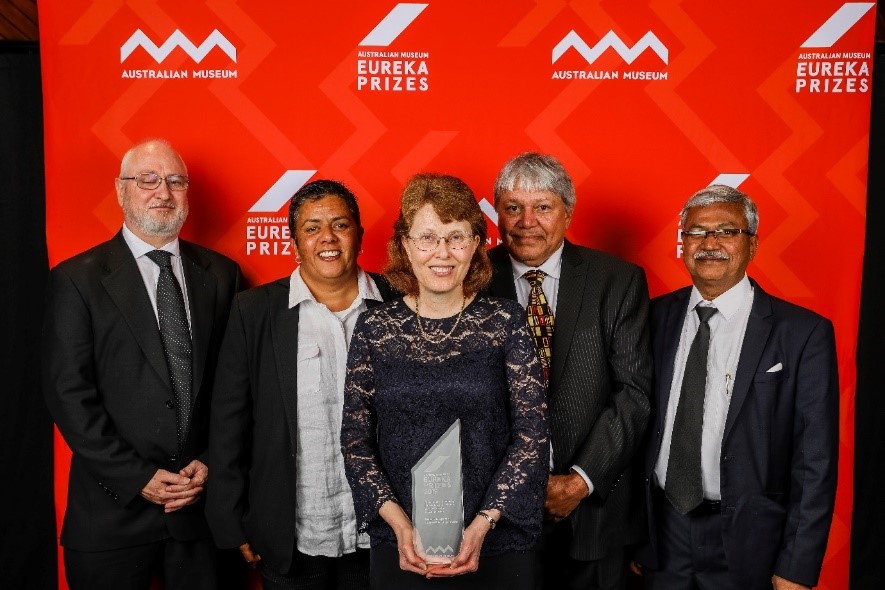
Program Eureka Prizes 2019 © Salty Dingo 2019 CRG-7382
Title of talk: Facilitating Indigenous Community Capability Strengthening Through Natural Products Chemistry
Abstract: Many natural products chemists have tapped into the rich customary knowledge possessed by Indigenous cultures from around the world as part of their research programs. This has provided intellectually stimulating research opportunities and has been a successful avenue for drug discovery and the provision of commercial native foods, flavours, fragrances, nutraceuticals, cosmetics and agricultural products. Such research, when conducted with benefit sharing and reciprocity as core agenda, can also provide Indigenous community capability strengthening and immense rewards for both the Indigenous people and the academic research team involved. Through our national award winning best ethical practice protocols for working in respectful partnerships with Indigenous people, we have identified bioactive compounds, including those that are novel and have activities aligned with their customary medicinal uses, and have made significant inroads into the preservation of precious Indigenous customary knowledge.
We have also facilitated capability strengthening avenues and empowerment for our Indigenous community partners through incorporating their customary knowledge into co-authored handbooks and academic papers, cultural tours and education programs that are providing economic and educational benefits for these communities, wider public recognition of their significant knowledge, and contributing to closing the gap that Indigenous people face in health outcomes, education and employment.
Link to Joanie Jamie's personal profile
More information: www.facebook.com/NISEP.MQ, www.nisep.org.au and www.youtube.com/user/NISEPmq
Andrew JW Gleadow
Professor, University of Melbourne and Chair of Science Advisory Council of the Kimberly Foundation
 Andrew Gleadow is an Emeritus Professor of Geology and former Head of the School of Earth Sciences at the University of Melbourne. In 2017 he was awarded an AO for distinguished service to the earth sciences and to education, as an academic and researcher in the field of thermo- chronology and landscape evolution, and to professional geological and scientific societies. Andy has researched and published widely on the development and application of radiometric dating techniques, particularly in fission track analysis and thermochronology. His work has included dating of hominin fossil sites in East Africa and he is currently coordinating a major program to date the rock art succession in the Kimberley. Andy has received numerous awards for his research, is a Fellow of the Australian Academy of Sciences, and a former President of the Geological Society of Australia. Andy was appointed as Chair of the SAC in November 2013.
Andrew Gleadow is an Emeritus Professor of Geology and former Head of the School of Earth Sciences at the University of Melbourne. In 2017 he was awarded an AO for distinguished service to the earth sciences and to education, as an academic and researcher in the field of thermo- chronology and landscape evolution, and to professional geological and scientific societies. Andy has researched and published widely on the development and application of radiometric dating techniques, particularly in fission track analysis and thermochronology. His work has included dating of hominin fossil sites in East Africa and he is currently coordinating a major program to date the rock art succession in the Kimberley. Andy has received numerous awards for his research, is a Fellow of the Australian Academy of Sciences, and a former President of the Geological Society of Australia. Andy was appointed as Chair of the SAC in November 2013.
Title of talk: The Kimberley Foundation Australia - supporting research in partnership with Indigenous Australians
Link to Andrew Gleadow's personal profile
Kimberly Foundation
Colette Geier
PhD Candidate School of Agricultural and Wine Sciences, Charles Sturt University
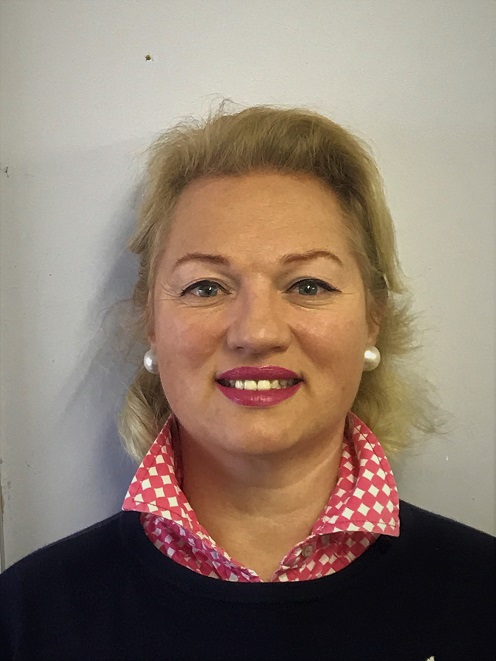
Colette is currently in the first year of a PhD in the chemistry discipline of Charles Sturt University in Wagga Wagga, NSW. Her project investigates the role of environmental factors and preparation techniques on the phytochemistry of Eremophila longefolia. A range of analytical techniques developed during her previous Honours research will guide the analytical techniques used in her project and will include chromatographic analyses such as LC-QTOF-MS and LC-QQQ-MS, in addition to antioxidant capacity testing using chromatography with online-ABTS antiradical assessment . Screening assays relevant to anti-inflammatory and anti-microbial activity will also be employed. Colette’s Chemistry supervisory group (including Drs Paul Prenzler, Danielle Ryan and Lachlan Schwarz) have a strong track record investigating the phenolic chemistry of grapes, olives and a range of medicinal plants through chromatography and metabolomics, work well suited to informing the analytical direction of Colette’s current project. The addition of two local Wiradjuri academic supervisors to her team (Dr Faye McMillan and Lloyd Dolan) provide an invaluable skillset of Wiradjuri protocol and knowledge as well as a conduit to local community. Prior to tertiary study, Colette spent many years working as a chef and a farmer, skills surprisingly transferable to both the lab and to field work. Although the chemistry is the main focus of the project, it also aims to build capacity within the local First Nation’s community and consequently, Colette is receiving an unprecedented amount of support and goodwill from groups and individuals throughout the Wagga area.
Title of talk: The Effects of Customary Harvest & Preparation Practices on the Phytochemistry of Eremophila longefolia
Abstract: (Colette Geier, Paul Prenzler, Faye McMillan, Danielle Ryan, Lloyd Dolan, Lachlan Schwarz and Community members) This PhD project is a collaboration between the chemistry department at Charles Sturt University and local Indigenous groups from Wagga Wagga. Together we are investigating the influence of traditional knowledge relating to bush medicine preparation on secondary metabolite concentrations in Eremophila longefolia (Emu Bush). The aim of the project is to form meaningful and mutually beneficial partnerships with a local Indigenous community, understand the complex and sophisticated medicinal knowledge still practiced by that community, and investigate how that knowledge may be used in the development of business opportunities in skincare and nutraceuticals. The talk will focus on the evolution of the project, its focus on best-practice collaboration and the importance of authenticity, connection and reciprocity.
Link to Colette Geier's personal profile
Session 3 speakers
Susan Semple
Senior Research Fellow, School of Pharmacy and Medical Sciences, University of South Australia I have a background in pharmacy and natural products chemistry. My research interests include Australian medicinal and food plants with an emphasis on research which is in partnership with Australian Aboriginal communities and driven by the communities themselves. Currently my work involves collaborative research projects with communities in Queensland and South Australia examining the health benefits of, and product development from, some traditional medicinal and food plants. We focus on plants with antibacterial, anti-inflammatory and anti-diabetic activities. I also collaborate with researchers at the University of Copenhagen in Denmark and Shandong University in China. I am a member of the “Desert-loving Therapeutics” project team. Led by Professor Birger Møller of the Plant Biochemistry Laboratory, University of Copenhagen, this interdisciplinary project brings together botany, taxonomy, evolutionary phylogeny, plant chemistry and pharmacology to understand the chemistry and bioactivity of the Australian plant genus Eremophila. Thorough this project we are looking at models of equitable benefit-sharing and the establishment of a Trust to fund projects driven by Indigenous communities and organisations.
I have a background in pharmacy and natural products chemistry. My research interests include Australian medicinal and food plants with an emphasis on research which is in partnership with Australian Aboriginal communities and driven by the communities themselves. Currently my work involves collaborative research projects with communities in Queensland and South Australia examining the health benefits of, and product development from, some traditional medicinal and food plants. We focus on plants with antibacterial, anti-inflammatory and anti-diabetic activities. I also collaborate with researchers at the University of Copenhagen in Denmark and Shandong University in China. I am a member of the “Desert-loving Therapeutics” project team. Led by Professor Birger Møller of the Plant Biochemistry Laboratory, University of Copenhagen, this interdisciplinary project brings together botany, taxonomy, evolutionary phylogeny, plant chemistry and pharmacology to understand the chemistry and bioactivity of the Australian plant genus Eremophila. Thorough this project we are looking at models of equitable benefit-sharing and the establishment of a Trust to fund projects driven by Indigenous communities and organisations.
Title of talk: Antimicrobial activity of selected Eremophila species
Abstract: (Susan Semple, Chi Ndi, Nhung Thi Dinh, Hans Albert Pedersen, Dan Staerk, Henrietta Venter) Antimicrobial resistance is now one of the world’s most pressing health issues. Without action to combat this issue it has been estimated that by 2050, 10 million lives a year could be lost because of drug-resistant infections. Plants are a potential source of new antimicrobials and compounds that may restore the activity of existing antibiotics. Aims: To examine the antibacterial activity of 8 Eremophila species chosen to represent the genetic and chemical diversity of the genus. Methods: Acetonitrile extracts of the whole leaf and leaf resins of E. alternifolia subsp. alternifolia, E. caerulea subsp. caerulea, E. galeata, E. latrobei, E. linearis, E. longifolia, E. oppositifolia subsp. angustifolia and E. scoporia were produced. Extracts were screened for antibacterial and antifungal activity using broth microdilution techniques. Extracts were screened for potential inhibitors of bacterial efflux pumps including the NorA efflux pump in Staphylococcus aureus and the AcrAB–TolC multidrug efflux pump in Escherichia coli using checkerboard assays. Extracts of the root bark and inner root of the 8 species were also tested in selected antibacterial assays. Isolation and structural elucidation of compounds from some of the active extracts has been undertaken. Results and Discussion: Among extracts of the 8 species, 7 of the resin extracts and five leaf extracts showed activity against S. aureus. The resin extracts of E. linearis and E. latrobei showed the most promising activity, with a minimum inhibitory concentration (MIC) of 16-32 and 32-64 µg/mL, respectively. Serrulatane diterpenoids including the new compound 7,8-dihydroxy-6-methyl-4-(6-methylhept-5-en-2-yl)-1,2,3,4-tetrahydronaphthalen-1-yl)methyl propionate were identified in the active fractions of the resin extract of E. linearis. Activity against methicillin-resistant S. aureus (MRSA) and vancomycin resistant Enterococcus faecium (VRE) was also demonstrated. None of the extracts displayed antibacterial activity towards E. coli. Extracts of E. alternifolia and E. caerulea showed only modest antifungal activity against the yeast Candida albicans (MIC 256 µg/mL).
The resin extract of E. oppositifolia showed the greatest synergistic effect with the antibiotic norfloxacin in a strain of S. aureus over-expressing the NorA efflux pump, reducing the MIC of the antibiotic up to 32-fold. The root bark extract of E. galeata showed modest activity in combination with antimicrobials that are substrates for the AcrAB–TolC multidrug efflux pump in E. coli BW25113. Techniques including solid phase extraction, size exclusion chromatography, and HPLC resulted in the isolation of compounds from the root bark extract of E. galeata including new serrulatane diterpenoids and a triterpenoid.
Link to Susan Semple's personal profile
Chi Ndi
Natural Product Chemist, University of South Australia
 Dr Chi Ndi is a natural product chemist who has worked in the field of Natural Product Chemistry since 1998. He completed a Bachelor of Science degree in Chemistry at the University of Buea, and a Post-graduate diploma in Chemistry of Natural Products from the University of Dschang, both in Cameroon. This collaborative research project was carried out in Cameroon where the group screened over 600 different plants in the Korup National Park, looking for components that could correct a cystic fibrosis genetic defect using genetically modified yeast cells. He later completed a master’s degree in Biology (with a focus on Pharmacognosy) in Leiden where he worked with plant cell cultures of Tabernaemontana divaricata. In this Project he elicitated the plant cell cultures of Tabernaemontana divaricata to produce phytoalexins which are not produced by the intact plant; and isolated the phytoalexins produced using different chromatographic techniques. Dr Ndi has worked with Australian desert plants belonging to the Eremophila genus for over fourteen years starting with his PhD studies where he screened 67 different Eremophila species for antimicrobial activity and isolated some novel diterpenoids from some of the most active ones. He subsequently worked as a postdoctoral researcher on a National Health and Medical Research Council (NHMRC)-funded project examining the use of these compounds to develop novel surface coatings, which led to a patent. He since has worked on isolation and identification of bioactive compounds from several different Australian native plant species. Identifying bioactive compounds from different plant extracts and isolating those active compounds constitutes one of his major interests.
Dr Chi Ndi is a natural product chemist who has worked in the field of Natural Product Chemistry since 1998. He completed a Bachelor of Science degree in Chemistry at the University of Buea, and a Post-graduate diploma in Chemistry of Natural Products from the University of Dschang, both in Cameroon. This collaborative research project was carried out in Cameroon where the group screened over 600 different plants in the Korup National Park, looking for components that could correct a cystic fibrosis genetic defect using genetically modified yeast cells. He later completed a master’s degree in Biology (with a focus on Pharmacognosy) in Leiden where he worked with plant cell cultures of Tabernaemontana divaricata. In this Project he elicitated the plant cell cultures of Tabernaemontana divaricata to produce phytoalexins which are not produced by the intact plant; and isolated the phytoalexins produced using different chromatographic techniques. Dr Ndi has worked with Australian desert plants belonging to the Eremophila genus for over fourteen years starting with his PhD studies where he screened 67 different Eremophila species for antimicrobial activity and isolated some novel diterpenoids from some of the most active ones. He subsequently worked as a postdoctoral researcher on a National Health and Medical Research Council (NHMRC)-funded project examining the use of these compounds to develop novel surface coatings, which led to a patent. He since has worked on isolation and identification of bioactive compounds from several different Australian native plant species. Identifying bioactive compounds from different plant extracts and isolating those active compounds constitutes one of his major interests.
Link to Chi Ndi's personal profile
Professor, Natural Products and Peptides, University of Copenhagen
 Professor Dan Staerk is heading the Natural Products Research group and Copenhagen Small-Molecule NMR Center. His research interests include discovery of small-molecule and peptide-based drug leads from natural sources like medicinal plants, marine organisms, and microorganisms, with disease areas covering type 2 diabetes, infectious diseases (antibacterial and antifungal compounds), and cancer. Another line of research includes sustainable drug discovery as well as development of sustainable functional food from sources like food by-products and biosynthetically modified organisms. A central part of his research is development and application of new state-of-the-art bioanalytical techniques for advanced chemical and pharmacological profiling of complex extracts. This includes high-resolution bioactivity profiling and ligand fishing for identification of bioactive constituents in crude extracts - followed by HPLC-PDA-HRMS-SPE-NMR analysis for full structural identification of individual constituents. Similarly, bioactivity-correlated metabolomics and bioaffinity NMR are regularly employed techniques used to study bioactive natural products.
Professor Dan Staerk is heading the Natural Products Research group and Copenhagen Small-Molecule NMR Center. His research interests include discovery of small-molecule and peptide-based drug leads from natural sources like medicinal plants, marine organisms, and microorganisms, with disease areas covering type 2 diabetes, infectious diseases (antibacterial and antifungal compounds), and cancer. Another line of research includes sustainable drug discovery as well as development of sustainable functional food from sources like food by-products and biosynthetically modified organisms. A central part of his research is development and application of new state-of-the-art bioanalytical techniques for advanced chemical and pharmacological profiling of complex extracts. This includes high-resolution bioactivity profiling and ligand fishing for identification of bioactive constituents in crude extracts - followed by HPLC-PDA-HRMS-SPE-NMR analysis for full structural identification of individual constituents. Similarly, bioactivity-correlated metabolomics and bioaffinity NMR are regularly employed techniques used to study bioactive natural products.
Title of talk: Advances in pharmacological and chemical investigation of Eremophila species
Abstract: (Yong, Zhao, Hans Albert Pedersen, Susan Semple, Tui Li, Daniel Fedotov, Sonia Coriani and Dan Stærk). Drug discovery from plant extracts is a challenging task, and advances in pharmacological and chemical investigation of such complex mixtures is heavily dependent on development and use of state-of-the-art technologies. In this lecture, and some recent developments in bioanalytical technologies for natural products-based drug discovery will be outlined, and results from our investigation of Eremophila species will be presented. High-resolution biochromatography coupled with high-performance liquid chromatography - photodiode-array detection - high-resolution mass spectrometry - solid-phase extraction - nuclear magnetic resonance spectroscopy, i.e., HR-biochromatography/HPLC-PDA-HRMS-SPE-NMR, was used for identifying potential antidiabetic (antihyperglycaemic) constituents in Eremophila rugosa and E. oppositifolia. This revealed a series of 26 new serrulatane-type diterpenoids in E. rugosa, many of which are potent inhibitors of α-glucosidase and protein tyrosine phosphatase 1B (PTP1B), two key targets for management of type 2 diabetes. Likewise, 11 new and 2 known branched chain fatty acid monomers and dimers with PTP1B inhibitory activity was identified in E. oppositifolia. Isolation and structural characterization using HPLC-PDA-HRMS-SPE-NMR provides full structural characterization of even minor constituents directly form crude extracts, including relative stereochemistry. However, both in terms of reporting pharmacological activity and for publication, determination of absolute configuration is a requirement. Using a combination of electronic circular dichroism and computational chemistry methods, we established for the first time the absolute configuration of all stereocenters of serrulatane diterpenoids from E. rugosa and E. denticulata.
Link to poster abstract
Link to Dan Stærk's personal profile
Birger Lindberg Møller
Professor of Plant Biochemistry at the University of Copenhagen and Distinguished Professor at the Carlsberg Laboratory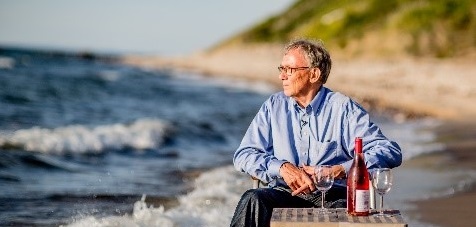
Birger Lindberg Møller’s research focuses on the role of bio-active natural products in plant growth and development, resistance to abiotic and biotic stresses and in plant communication with the environment. Results from field studies are combined with studies of the isolated enzyme complexes involved at the single molecule level. Key classes of natural products studied are cyanogenic glucosides and diterpenoids with focus on their biosynthesis, turn-over, storage, and role in plant insect and plant microbe interactions. This research was recently expanded to include the nuclear DNA based phylogeny and phytochemosystematics of the entire Eremophila genus. In synthetic biology, his research group is focussed on the direct channeling of photosynthetic electron flow into light-driven synthesis of high-value products by engineering the assembly of all required enzymes in the chloroplast and using carbon dioxide from the air as the sole carbon source. Birger Lindberg Møllers research is supported by the VILLUM Foundation, the Novo Nordisk Foundation, the Lundbeck Foundation and by an ERC Advance Grant.
Title of talk: Biosynthesis of diterpenoids in the Australian plant genus Eremophila
Abstract: (Oliver Gericke, Dan Luo, Nikolaj Lervad Hansen, Gustav Blichfeldt Pedersen, Louise Kjærulff, Dan Stærk, Irini Pateraki, Allison Maree Heskes, Birger Lindberg Møller) The plant genus Eremophila R.Br. (Scrophulariaceae) is comprised of a diverse array of species distributed across semi-arid and arid Australia. It is an ecologically important genus that also holds cultural significance for many Indigenous Australians who have traditionally used a large number of species as sources of herbal medicines. Serrulatane, viscidane and cembrane-type diterpenoids feature prominently in the chemical profile of species from this genus. Recent studies have shown that these compounds are responsible for much of the reported bioactivity, including anti-diabetic and anti-microbial activity. We have investigated the biosynthesis of these diterpenoids in three species of Eremophila: E. lucida, E. drummondii and E. denticulata subsp. trisulcata. In all species the major diterpenoids were found to be surface localised and associated with glandular trichomes. With the aid of trichome enriched transcriptome databases, we have elucidated steps in the biosynthetic pathway to the major diterpene backbones in these species and identified some of the cytochrome P450s catalysing core decorations.
Link to Birger Lindberg Møller's personal profile
Lyndal Thorburn and Ken Bruce Warnes
Eremophila Study Group, ANPSA
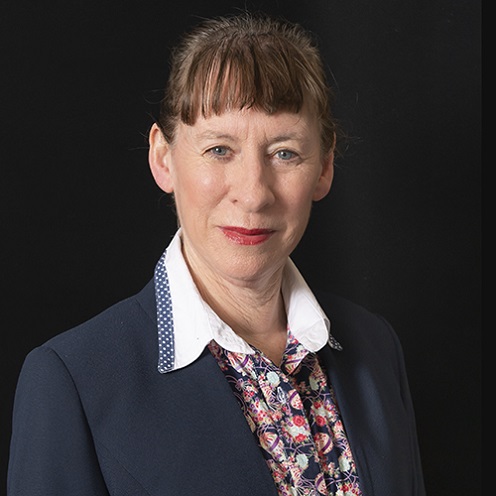
The Australian Native Plants Society of Australia (ANPSA) sponsors native plant study groups, among them the Eremophila Study Group. This Study Group was formed in 1968 and has 130 members around Australia. Members include everyone from new gardeners interested in finding out more about the genus, to experience academics (including some of those speaking at this conference). The Study Group aims to find out more about the genus for the purposes of both conservation and horticulture. It publishes regular newsletters, is establishing an online image database, registers Eremophila cultivars and organises field trips. Its members are contributing to research at the University of New England on chemical profiles of Eremophila species and are keen to develop ties with other researchers.
Session 4 speakers
Claus Juul Løland
Professor, Neuropharm and Genetics, University of Copenhagen
 Claus Juul Løland and his lab focuses on structure-function relationships in membrane transporters with focus on the Neurotransmitter:Sodium Symporter (NSS) class of proteins. They elucidate at atomic level resolution the molecular mechanisms within the proteins that mediate substrate transport. The focus is on identification of specific domains that undergoes conformational changes during substrate binding and translocation. They also map binding sites and binding modes for substrates (e.g. dopamine, serotonin, amphetamine) and inhibitory drugs (e.g. cocaine, antidepressants). The methods they use to address these issues include advanced biophysics on purified proteins and all aspects of biochemistry and molecular pharmacology on cell systems.
Claus Juul Løland and his lab focuses on structure-function relationships in membrane transporters with focus on the Neurotransmitter:Sodium Symporter (NSS) class of proteins. They elucidate at atomic level resolution the molecular mechanisms within the proteins that mediate substrate transport. The focus is on identification of specific domains that undergoes conformational changes during substrate binding and translocation. They also map binding sites and binding modes for substrates (e.g. dopamine, serotonin, amphetamine) and inhibitory drugs (e.g. cocaine, antidepressants). The methods they use to address these issues include advanced biophysics on purified proteins and all aspects of biochemistry and molecular pharmacology on cell systems.
Title of talk: The search for novel ligands from Eremophila species targeting neurotransmitter:sodium symporters
Abstract: The family of neurotransmitter:sodium symporters (NSSs) mediate rapid re-uptake of neurotransmitters released to the synaptic cleft making them important determinants of neuronal communication. Accordingly, drugs that modulate their activity are central for the treatment of many neuropsychiatric diseases, such as depression, attention deficit hyperactivity disorder (ADHD), anxiety and narcolepsy. However, many patients do not respond adequately to the current drugs. Others stop the treatment due to severe side effects. In addition, high-affinity inhibitors for many NSS proteins are still to be found. Here, we present results from purified compounds and extracts from Eremorphila species for their activity towards the dopamine transporter (DAT). We find that the addition of the branched chain fatty acid KU030-14 potentiated DAT transport of dopamine. We also found several extracts that inhibited DAT activity. Taken together, we find it possible that Eremorphila species contain one or more active compounds towards DAT and possibly also other NSS proteins.
Link to Claus Juul Løland's personal profile
Rohan Davis
Associate Professor, Griffith Institute for Drug Discovery (GRIDD), Griffith University, Brisbane, Australia
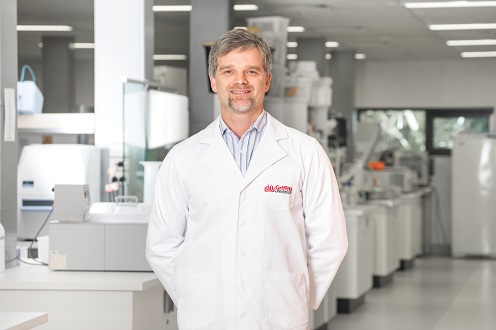 Associate Professor Rohan Davis received a BSc (Hons) from the University of Melbourne (1992) and a PhD from Griffith University (2001). Rohan subsequently worked for two years at the University of Utah (post-doc) before being recruited back to Griffith in 2003. His research involves: (i) the design and synthesis of drug discovery and chemical probe libraries based on natural product (NP) scaffolds; (ii) the isolation and structure elucidation of new bioactive NPs from Australian biota; and (iii) biodiscovery involving high-throughput screening against cells and molecular targets. Rohan has authored 147 publications, and holds two patents. He has led both industry and academic research projects that have resulted in the identification of >1000 NPs from plant, marine invertebrate and microbial sources. A/Prof. Davis is the Academic Lead for NatureBank, which is a unique Australian biodiscovery resource that is housed at GRIDD.
Associate Professor Rohan Davis received a BSc (Hons) from the University of Melbourne (1992) and a PhD from Griffith University (2001). Rohan subsequently worked for two years at the University of Utah (post-doc) before being recruited back to Griffith in 2003. His research involves: (i) the design and synthesis of drug discovery and chemical probe libraries based on natural product (NP) scaffolds; (ii) the isolation and structure elucidation of new bioactive NPs from Australian biota; and (iii) biodiscovery involving high-throughput screening against cells and molecular targets. Rohan has authored 147 publications, and holds two patents. He has led both industry and academic research projects that have resulted in the identification of >1000 NPs from plant, marine invertebrate and microbial sources. A/Prof. Davis is the Academic Lead for NatureBank, which is a unique Australian biodiscovery resource that is housed at GRIDD.
Title of talk: Hunting Eremophila Alkaloids
Abstract: Humans have utilised alkaloid-containing plants since the dawn of time for therapeutic purposes. Modern drug discovery research (1800’s onwards) on many of these plants has identified important and well-known alkaloid drugs including morphine, vinblastine, scopolamine, atropine, cocaine, quinine, physostigmine, galantamine, colchicine and theophylline, to name but a few. While >200 secondary metabolites have been isolated from the endemic Australian plant genus Eremophila to date, only three of these natural products contain nitrogen, the cyanoglycosides mandelonitrile β-sophoroside and prunasin, and the quinoline-serrulatane, microthecaline A that was recently reported by the Davis group. The discovery of microthecaline A has initiated semi-synthetic investigations on this novel skeleton, further biological testing, and a research program looking to discover new alkaloids from this unique plant genus. This presentation will describe the use of the GRIDD’s NatureBank biodiscovery platform in the hunt for additional Eremophila alkaloids.
More information: https://www.griffith.edu.au/institute-drug-discovery/unique-resources/naturebank
https://publons.com/researcher/2890317/rohan-a-davis/
Link to Rohan Davis' personal profile
Link to poster abstract, Kah Yean Lum
Daniel Murphy
Senior Research Scientist (Molecular Systematist) at Royal Botanic Gardens, Melbourne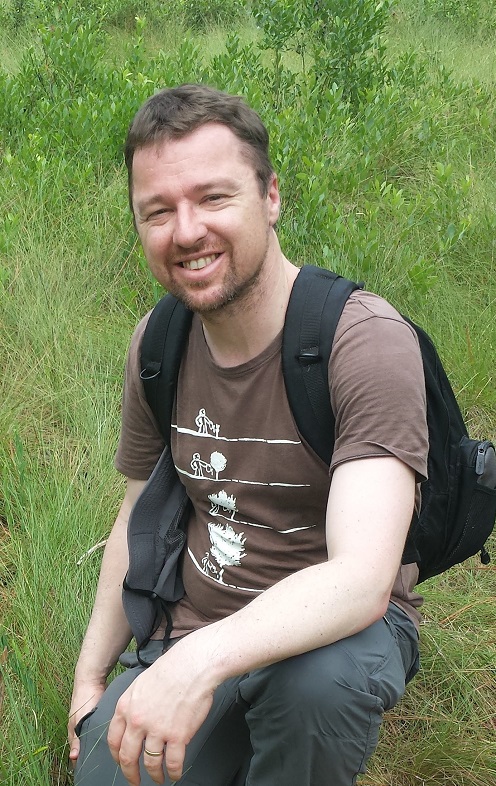 Daniel Murphy is a molecular systematist (systematic botanist) whose research primarily involves the use of molecular data (DNA sequencing) to investigate questions about the systematics, taxonomy, classification and biogeography of flowering plants. Dan is Editor-in-Chief of Australian Systematic Botany, Australia's major scientific journal in his field of research. Dan has a particular interest in the evolutionary history of Australia's flora and the historical connections of this flora to other parts of the world. He has focussed much of his research on Acacia (the largest genus of plants in Australia) and related legumes in the Mimosoideae subfamily. Together with staff at the Royal Botanic Gardens Victoria and researchers in tertiary institutions, Dan is involved in a range of research projects, including the biogeography of Persoonia; plant movements of Adansonia and Vachellia (Acacia) farnesiana; grass phylogenetics and DNA barcoding; salinity tolerance research in Acacia; and pollination biology and plant–animal interactions. Much of Dan's work uses the Royal Botanic Gardens Victoria's living and herbarium collections for molecular research with an overarching aim of integrating systematics and taxonomic research into practical tools. This has resulted in the development of applications of systematics to the areas of plant identification (DNA barcoding), biosecurity, invasive plant studies, and sustainable agriculture.
Daniel Murphy is a molecular systematist (systematic botanist) whose research primarily involves the use of molecular data (DNA sequencing) to investigate questions about the systematics, taxonomy, classification and biogeography of flowering plants. Dan is Editor-in-Chief of Australian Systematic Botany, Australia's major scientific journal in his field of research. Dan has a particular interest in the evolutionary history of Australia's flora and the historical connections of this flora to other parts of the world. He has focussed much of his research on Acacia (the largest genus of plants in Australia) and related legumes in the Mimosoideae subfamily. Together with staff at the Royal Botanic Gardens Victoria and researchers in tertiary institutions, Dan is involved in a range of research projects, including the biogeography of Persoonia; plant movements of Adansonia and Vachellia (Acacia) farnesiana; grass phylogenetics and DNA barcoding; salinity tolerance research in Acacia; and pollination biology and plant–animal interactions. Much of Dan's work uses the Royal Botanic Gardens Victoria's living and herbarium collections for molecular research with an overarching aim of integrating systematics and taxonomic research into practical tools. This has resulted in the development of applications of systematics to the areas of plant identification (DNA barcoding), biosecurity, invasive plant studies, and sustainable agriculture.
Title of talk: Australia's arid zone biogeography: what is know about the home of Eremophila?
Abstract: In this talk I will discuss what constitutes Australia’s arid zone, what is currently know about its evolution and biogeographic history, and how recent results and future directions will contribute to our understanding. Australia’s arid biome covers approximately 70% of the continent, which is tracked very closely by the distribution of Eremophila. The evolutionary history of Australia’s arid zone is complex and relatively poorly known, with studies to date finding multi-layered and complex historical distributional patterns of endemism of plants, including recent (some human-mediated), pre-human and ancient (relictual) distributions recorded. Information about the historical distribution and expansion and contraction of species ranges is important to make predictions, especially for a changing climate, in order to inform conservation and management of the genetic information in species for the future. Studies of the evolution and biogeographic connections of the Australian arid zone require plant groups that predominate in the arid zone but have mesic connections; Eremophila and the tribe Myoporeae are perfect candidates for further research.
Link to Daniel Murphy's personal profile
Michael Whitehead
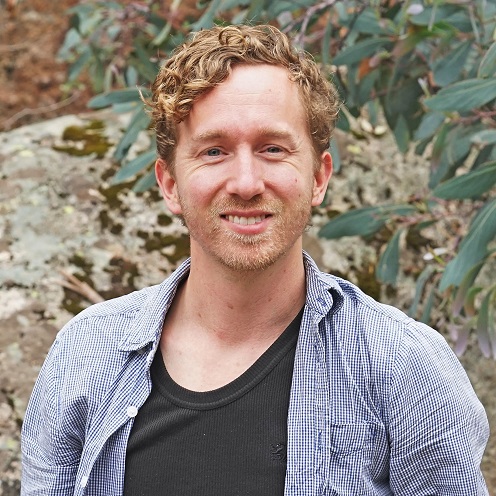
Michael is a postdoctoral fellow with the University of Queensland. His main research focus is the interface of animal behaviour with plant evolution and ecology. Here he has been integrating genetics and behavioural ecology to answer questions about the evolution of floral diversity, plant gene flow, pollination ecology, and floral mimicry. In addition, Michael's research includes plant-fungal interactions, as well as applied work to inform decisions in revegetation, translocation, and the conservation of plant diversity.
Title of talk: Contrasting gene flow under bird and insect pollination in Eremophila.
Abstract: The range of animals involved in pollination is wide, from small insects to large and mobile vertebrates such as birds and bats. It is likely that behavioural differences between functional groups of pollinators may impose different patterns of gene flow on the plants they service, and these differences may be important for the evolution and maintenance of plant diversity. This project studies a pair of sympatric Eremophila species: Eremophila decipiens is visited by birds, while Eremophila scoparia is visited by a suite of bee species. SNP genotyping at sites of sympatry was used to reveal finescale patterns in individual relatedness from which we can draw inferences about pollen flow under bird versus insect pollination.
Link to Michael Whitehead's personal profile
